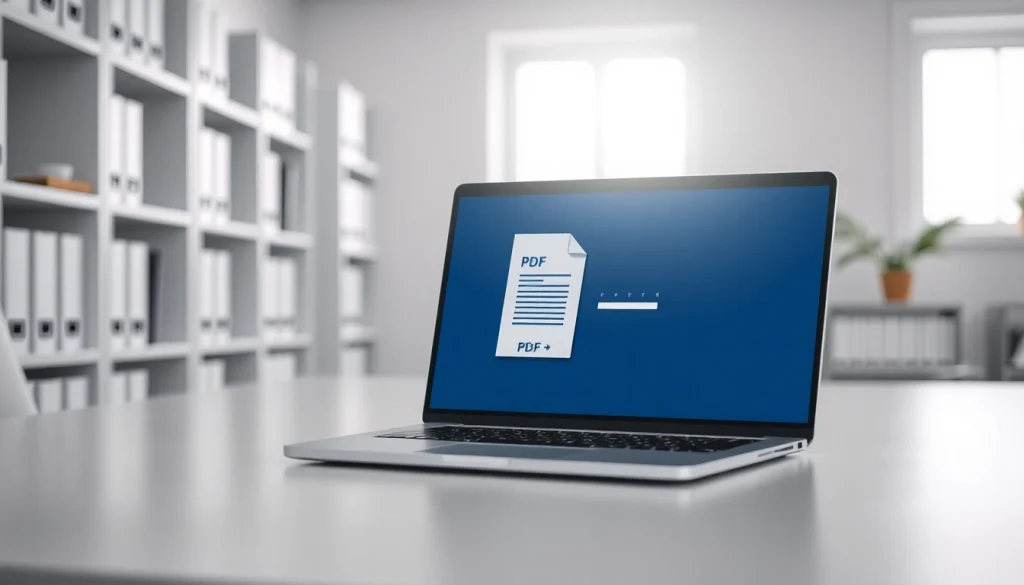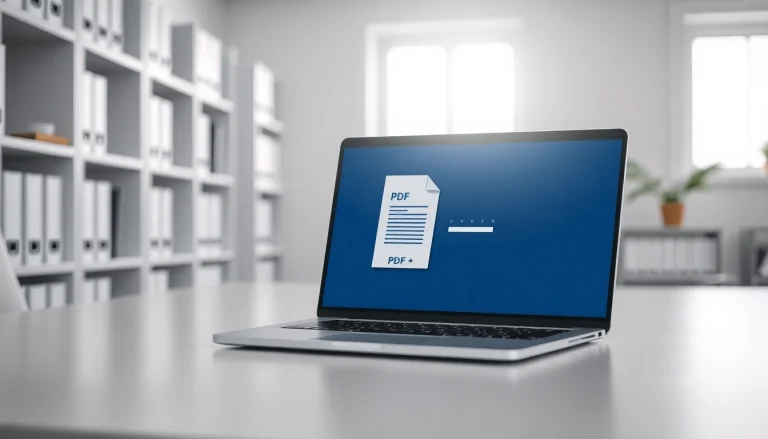
Understanding PDF Compression
What is PDF Compression?
PDF compression is the process of reducing the file size of a PDF (Portable Document Format) document while retaining its essential features and readability. This technique is crucial in today’s digital age, where large files can hinder sharing, storage, and browsing efficiency. By employing various algorithms and strategies, PDF compression optimizes images, removes unused elements, and fine-tunes the encoding of text and graphics. The aim is a smaller file size, making documents easier to share without compromising on quality or content.
Benefits of Compressing PDF
Compressing PDF files brings multiple advantages:
- Reduced File Size: Smaller file sizes make documents easier to share and store, especially in environments with limited bandwidth.
- Faster Upload and Download Times: With reduced sizes, PDFs take less time to upload and download, enhancing user experience.
- Improved Organization: Smaller files facilitate better organization in digital workspaces, allowing users to save space and manage documents more effectively.
- Cost Efficiency: For businesses, saving on storage space can lower costs associated with digital file management.
Common Misconceptions about PDF Compression
Despite its benefits, PDF compression often faces several misconceptions:
- It Always Reduces Quality: While some compression methods may lower quality, many techniques allow for significant size reduction without noticeable loss of fidelity.
- It’s Only Necessary for Large Files: Even moderately sized PDFs can benefit from compression to optimize efficiency and accessibility.
- All Compression Tools Offer the Same Results: Different tools utilize various algorithms that result in varying quality and size reductions, making it essential to choose the right one.
Methods to Compress PDF
Using Online Tools for PDF Compression
Online tools provide a convenient solution for users needing to compress PDF files quickly. These platforms allow users to upload their documents and apply compression with just a few clicks. Many online tools offer free options, while others may provide enhanced functionalities for a fee. Features to consider include:
- User Interface: A simple, intuitive interface enhances user experience.
- Compression Quality: Look for tools that provide options for different compression levels, ensuring a balance between file size and quality.
- Security: Verify that the tool adheres to data protection standards, especially when handling sensitive information.
Software Options for Compressing PDF Files
For users who prefer offline solutions or require batch processing, dedicated software offers a robust alternative. Various software options come equipped with advanced features such as:
- Custom Settings: Advanced software allows users to fine-tune compression settings, choosing between image quality and text clarity.
- Batch Processing: This feature enables the simultaneous compression of multiple PDF files, saving valuable time for businesses handling large volumes of documents.
- Integrated Editing Tools: Some software solutions provide additional functionalities, such as editing or merging PDFs post-compression.
How to Compress PDF via Email
Another method to compress PDFs involves email services. Large file sizes can hinder email transmission; compressing these files allows for seamless sending. Many email clients automatically compress attachments, but users can also opt to manually compress PDFs before attaching them. This is particularly useful when dealing with document size limits imposed by email providers. If you need to compress pdf files for email, consider using a reliable compression tool for optimal results.
Best Practices in PDF Compression
Choosing the Right Compression Settings
Selecting appropriate compression settings is vital for achieving the desired balance between file size and quality. Factors to consider include:
- Purpose of the PDF: For documents intended for online sharing, a higher compression ratio may be acceptable. Conversely, for professional presentations, maintaining quality is paramount.
- Document Type: Text-heavy documents may require different compression techniques than image-heavy ones. Selecting a method tailored to the content will yield better outcomes.
Maximizing Quality while Reducing Size
To maintain quality while effectively reducing size, users should:
- Use Lossless Compression: Lossless methods retain original quality, making them ideal for contracts or technical documents where clarity is essential.
- Evaluate Image Quality Settings: Optimize images in the PDF by adjusting DPI (dots per inch) and format. JPEG compression, for instance, offers a good compromise between size and quality.
- Remove Unused Elements: Trim unnecessary elements such as annotations, bookmarks, or unused fonts that can bloat file size.
When to Compress PDF for Various Uses
Understanding when to compress PDFs can enhance workflow efficiency. Here are a few scenarios:
- Submitting Applications: Compressed documents are easier to upload and fit within submission guidelines.
- Sharing via Cloud Services: Reducing file size facilitates faster sharing and storing in cloud platforms with limited space.
- Archival Purposes: Compressing files for long-term storage can save resources, especially for large archives.
Analyzing Compressed PDF Performance
Measuring the Impact of Compression on PDF Quality
Evaluating the effects of compression on PDF quality requires understanding different quality metrics. Users should conduct tests post-compression to assess:
- Visual Inspection: Reviewing the document visually for clarity and readability is essential, particularly for graphical elements.
- Functional Testing: Ensuring that hyperlinks, forms, and multimedia elements function as intended is critical for client-facing documents.
Understanding Compression Ratios
The compression ratio indicates how much the file size has decreased. A 50% compression ratio means the new file size is half that of the original. It’s crucial to evaluate this ratio in context to quality. Understanding acceptable limits for specific types of documents can guide effective compression.
Real-World Applications and Performance Metrics
To illustrate the effectiveness of PDF compression, consider case studies of businesses that have optimized their PDF handling:
- Education Institutions: Many educational institutions compress PDF files to reduce server load and enhance accessibility for students, achieving notable improvements in download times.
- Legal Firms: Law firms that manage significant quantities of documents benefit from reduced boilerplate content without quality loss, leading to faster negotiations and improved file management.
Troubleshooting PDF Compression Issues
Common Errors in PDF Compression
While compressing PDFs is generally straightforward, users may encounter issues such as:
- Corruption: Sometimes, compression can lead to corrupt files that fail to open. This is often due to improper compression settings or tool malfunctions.
- Excessive Quality Loss: Incorrect settings can lead to significant quality degradation, particularly in image-heavy documents.
Fixing PDF Quality Loss During Compression
To address quality loss effectively, consider these solutions:
- Revisit Compression Settings: Adjust settings to prefer quality over size, especially if critical details are present in the document.
- Use Different Compression Algorithms: Experiment with various algorithms until the right quality-file size balance is reached.
Seeking Help and Resources for PDF Compression
For continuous learning regarding PDF compression, numerous resources are available:
- Online Forums: Join tech forums or communities focused on digital document management for shared experiences and tips.
- Tutorials and Guides: Many software providers offer in-depth tutorials on optimal usage of their tools for PDF compression and related tasks.






